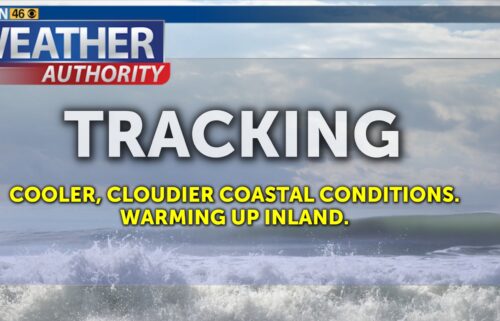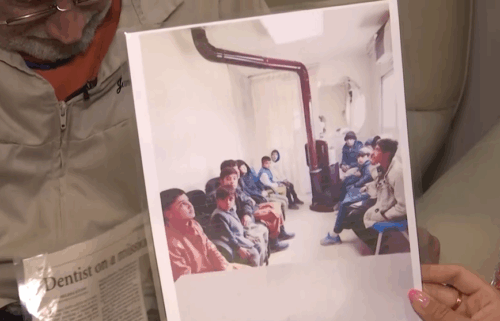A cooler than normal winter is forecast for a dozen states amid rising energy costs
By Allison Chinchar and Jennifer Gray, CNN
A dozen states could see cooler than normal temperatures this winter, according to NOAA’s outlook released Thursday morning. That could mean an increase in energy consumption across the northern tier of the US — amid rising energy costs.
“It takes energy to heat your house,” Andrew Dessler, a professor of atmospheric sciences at Texas A&M University who was not affiliated with NOAA’s outlook, told CNN. “So, the colder it is, the more energy we need for heating. And that’s bad news in a world where energy is constrained by things like the war in Ukraine.”
People from Oregon to Michigan may be feeling the pinch when they get their energy bills as temperatures are expected to be below normal during what is already the coldest part of the year.
“Putin has shut off Russian gas for Europe but they still need gas,” Dessler told CNN. “So they’re going buy US gas. That’s going to drive up the price for US consumers. So it’s definitely bad news for US consumers.”
In cities including Minneapolis, Seattle, Milwaukee, Wisconsin, and Portland, Oregon, where the forecast predicts below normal winter temperatures, the concern is how people will react to higher consumer prices.
“Since the price will go up, and it will price people out, people will hopefully turn their thermostats down, as opposed to there being shortages,” said Dessler.
One area where this may be easier is the southern tier of the US, where temperatures are expected to be above normal. Even some of the big cities in the Northeast may catch a break. Boston, New York, Philadelphia, and Baltimore all have a 33% to 40% probability of above normal temperatures this winter.
The forecast also calls for drought-stricken areas such as Southern California, Texas, Oklahoma and the lower Mississippi River Basin to receive below average rainfall during the winter months.
“Drought conditions are now present across approximately 59% of the country, but parts of the western US and southern Great Plains will continue to be the hardest hit this winter,” said Jon Gottschalck, chief of the operational prediction branch of NOAA’s Climate Prediction Center. “With the La Niña climate pattern still in place, drought conditions may also expand to the Gulf Coast.”
Oklahoma, Texas, and Arkansas will also see an enhanced wildfire danger over the next few months.
Drought is expected to impact the middle and lower Mississippi Valley this winter. This area, which is already seeing historically low water levels, is forecast to receive below normal precipitation this winter. Soil moisture will rebound in the upper Mississippi River Basin, but as that does not impact river levels, a significant improvement in those levels is not expected through the winter months.
Large-scale weather forecasts are strongly influenced by the effect of La Niña versus El Niño. Right now, La Niña is in effect. Essentially this means, “Equatorial sea surface temperatures are below average across most of the Pacific Ocean,” according to the prediction center.
The prediction center put the odds at 75% that La Niña would be in place through this winter. This will be the third winter in a row where La Niña has influenced the overall weather pattern.
La Niña and the polar vortex are driving the forecast
This typically creates drier conditions across much of the South and wetter conditions for the Pacific Northwest and portions of the Ohio Valley. La Niña also brings warmer temperatures to much of the South and mid-Atlantic, and cooler temperatures to the Pacific Northwest and northern Rockies.
The climate prediction center is calling for a 75% chance of La Niña during the Northern Hemisphere winter (December through February).
“La Nina is an important factor, but I think whether we really have a cold or a warm winter across the US is much more dependent on the state of the polar vortex,” said Judah Cohen — director of seasonal forecasting at Atmospheric and Environmental Research, a climate consultancy.
Cohen cites the recent record early snow in the Midwest as an example. “That’s related to this polar vortex stretching. I think we can expect even if we have an overall strong polar vortex, I would expect we’ll see these stretching events. So, we can get a very sharp turn to cold weather, but it doesn’t last long.”
The polar vortex is a circulation of strong, upper-level winds that normally surround the northern pole, moving in a counterclockwise direction — a polar low-pressure system.
Cohen also points out that we are seeing more weather whiplash in the winter, as far as temperatures go.
“I think with climate change, we’ve actually seen an increase in variability in the wintertime. So, whether we have a mild winter or cold winter, I think we’ll see kind of this ping pong or the windshield wiping effect from extreme temperatures.”
But even if you live in the southern portion of the US which is more likely to have an overall milder winter, there will still be short-term cold blasts that you have to plan for.
“You always have to be prepared,” Dessler said. “Even without seeing the forecast, I know we have to be prepared for a cold winter, because it can happen even in a warming world.”
The-CNN-Wire
™ & © 2022 Cable News Network, Inc., a Warner Bros. Discovery Company. All rights reserved.


